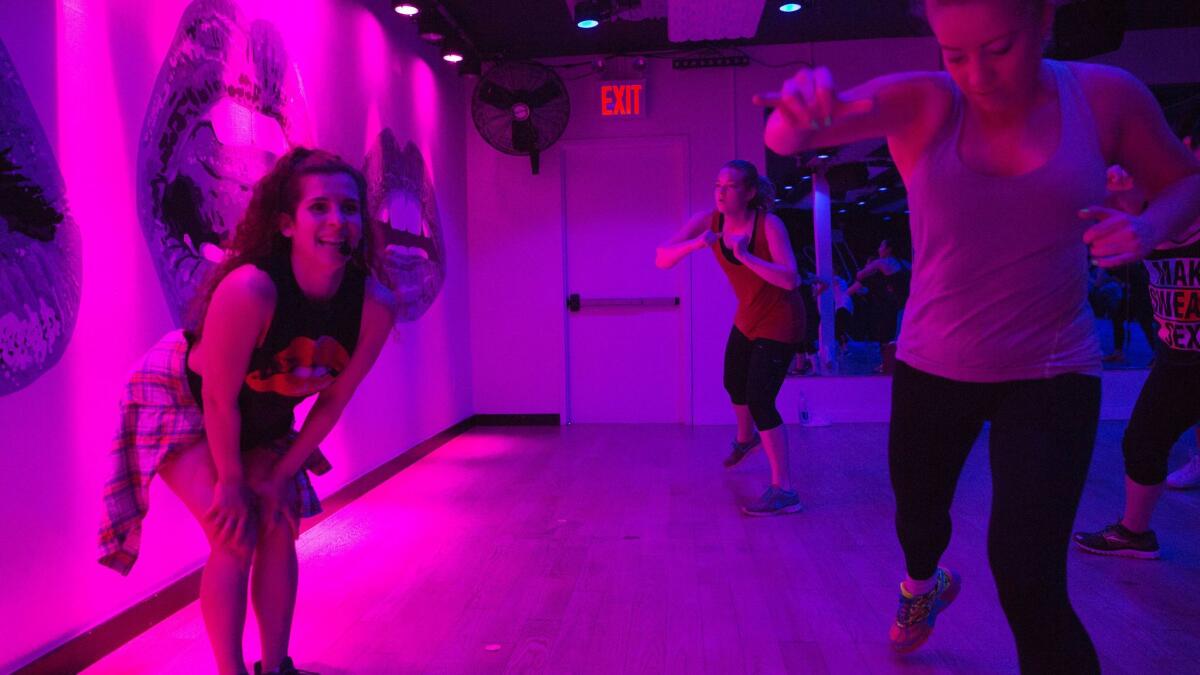Commentary: You don’t need to get all 30 minutes of exercise in at once

Do you find yourself making excuses for exercise because you think you don’t have the time to hit the gym? But you don’t need the gym to get in shape.
And, as it turns out, you don’t even need a lot of time.
We know we need at least 30 minutes of cardio three times a week to maintain proper health. But we’re forgetting that those 30 minutes don’t need to come in one chunk. Can you do jumping jacks for 10 minutes before you take a shower? Can you walk briskly to lunch for 10 minutes (and 10 minutes back)? If so, you’ve just exercised for 30 minutes today.
We don’t need dedicated clothing, a gym membership or a significant time commitment to incorporate exercise into our daily routine. A short burst of exercise is still exercise. And it can be enormously beneficial.
Walking “can help keep you [stay] fit and reduce your risk of serious diseases like heart disease, stroke and more,” according to the American Heart Assn., which advocates for 150 minutes of walking a week. “Even short 10-minute activity sessions can be added up over the week to reach this goal.”
What is important is to feel good about the exercise you are doing. Too many of us are beaten down by our own negative self-talk (“I didn’t get to the gym at all this week, so I failed”).
Getting to the gym isn’t the goal, improving your health is. Lift weights while watching TV. Stretch at your desk. Take the stairs (and try taking them briskly) instead of the escalator.
No, you won’t become a body-builder in 10-minute increments, but if the goal is improving or maintaining health, you’ll likely achieve it. Most importantly, you’ll begin an upward trend toward health rather than a decline toward weight gain and disease.
Plus, you’ll be amazed at how small changes affect big ones. For example, when I first started practicing, stretching was seen as something you did to warm up your muscles before a workout. Recently studies have found that people who engaged in flexibility exercise — and flexibility alone — saw a statistically significant improvement in strength as well.
This means that those yoga positions you do in front of the TV can have a lasting and meaningful effect on your strength, balance and overall health. It’s OK to start small. What’s important is that you start.
I tell my patients to think of exercise like saving for retirement. The earlier you start, the better the dividends. But don’t beat yourself up for not having started 10 years ago. Just make sure you don’t start 10 years from now. Here are a few exercises you can do to start small:
Strength: While standing with your knees straight, your feet a few inches apart and your hands lightly resting on a counter or a chair in front of you, slowly raise your heels off the floor. Hold for about six seconds, then slowly lower your heels to the floor. Repeat about eight to 12 times.
Cardio: Walk! Park far from the office and walk the rest of the way to work. Take the dog out around the block. Start to view elevators as unnecessary. Incorporate physical movement into your day, every chance you get.
Flexibility: Those same heel raises I recommended for strength can become a balance-and-flexibility stretch as well, if you are able to let your heels hand off from a raised surface.
Balance: Brush your teeth while standing on one foot. This twice-daily exercise regime will increase your balance and potentially help you prevent falls as you get older. It’s a tiny change, one done in your PJs, but the benefit can be enormous.
MARK GLAVINIC is the director of Rehabilitation Services at Hoag.
All the latest on Orange County from Orange County.
Get our free TimesOC newsletter.
You may occasionally receive promotional content from the Daily Pilot.



